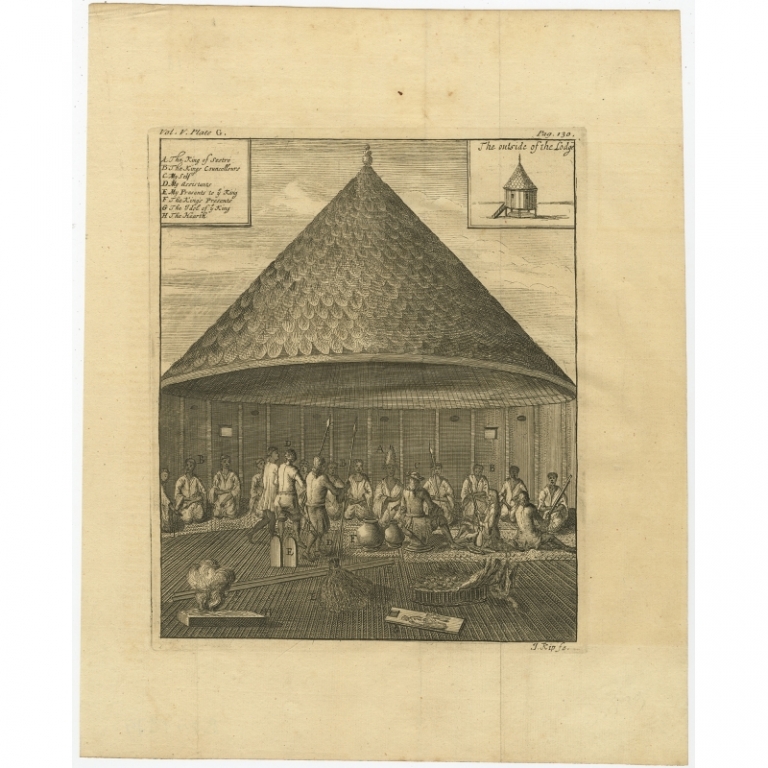FREE
WORLDWIDE
SHIPPING
No products
PCT-61633
Antique Print of the Court of the King of Sestro by Kip (1744)
- Condition: Good, given age. Paper slightly browned. A few light creases. Original fold as issued. General age-related toning and/or occasional minor defects from handling. Please study scan carefully.
- Date: 1744
- Overall size: 27.7 x 34.5 cm.
Worldwide
shipping
Description: Antique print, untitled. This plate shows the Court of the King of Sestro, Liberia, Africa, published in Churchill's 'A Collection of Voyages and Travels', some now first printed from original manuscripts others now first printed in English', printed in 1744 for Henry Lintot.
From: Churchill's 'A Collection of Voyages and Travels, some now first printed from original manuscripts others now first printed in English', printed in 1744 for Henry Lintot and John Osborn.
Artists and Engravers: Made by 'Johannes Kip' after an anonymous artist. JOHANNES KIP (b Amsterdam, 1653; d London, 1722). Dutch draughtsman, engraver and dealer, active in England. He was a pupil of Bastiaen Stopendaal (1636–1707) from 1668 to 1670. His earliest dated engravings are of 1672 (e.g. the Siege of Groningen , Hollstein, no. 4), and he supplied numerous plates for books published from that date onwards. His work brought him into contact with the court of William of Orange and in 1686 he produced six plates depicting William of Orange, his Wife and Attendants near The Hague (Hollstein, no. 5). Shortly after the Glorious Revolution of 1688 Kip followed the court to England. After settling in Westminster, he worked extensively for London publishers, engraving works after Francis Barlow, Caius Gabriel Cibber (e.g. Interior of the Danish Church in London , 1697; Hollstein, no. 6) and other London-based artists. His engravings were principally destined for book illustrations. The work for which Kip is best remembered is his large corpus of topographical engravings of country mansions, which were published first in 1708 as Britannia Illustrata: Or Views of Several of the Queen’s Palaces, as Also of the Principal Seats of the Nobility and Gentry of Great Britain, Curiously Engraven on 80 Copper Plates . This book is among the most important English topographical publications of the 18th century. The subjects were engraved by Kip after ‘bird’s-eye’ drawings executed by Leonard Knyff. The 65 folio plates of The Ancient and Present State of Gloucestershire (1712) by Sir Robert Atkyns (1647–1711), drawn and engraved by Kip, are among the finest collections of topographical illustrations in English publishing. They are also reliable illustrations of the development of the English garden. Kip also dealt in prints from his house in St John’s Street in Westminster.



